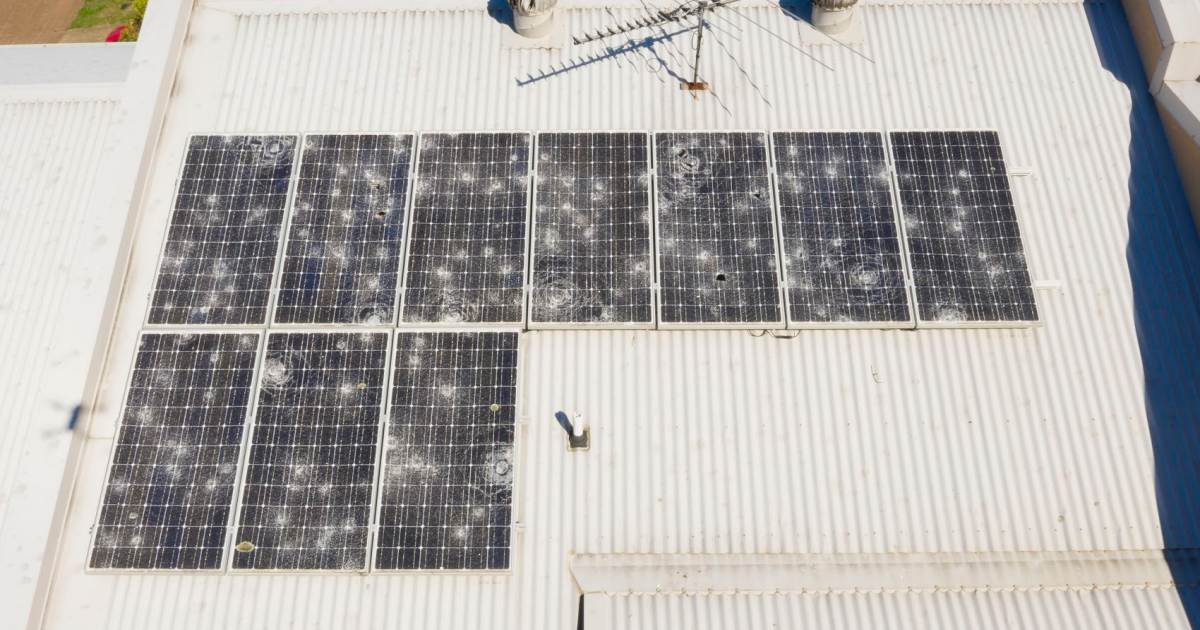
Image: @RACQOfficial
Owners of solar power systems that were damaged by recent hail storms in south-east Queensland may not be able to claim the “solar rebate” again on replaced solar panels says the Clean Energy Regulator.
Australia’s solar rebate (technically not a rebate) is based on virtual bits of paper called Small-scale Technology Certificates – STCs.
The number of certificates accompanying an eligible solar power system installation varies depending on the system size (solar panel capacity, not inverter capacity), installation date and location. The installation date plays a role as that is factored into determining the amount of electricity the system will generate over what’s called the “deeming period”. The deeming period for solar PV systems decreases by one year, every year until 2030; which is when the subsidy will end.
STCs have a monetary value that fluctuates with market conditions, with a maximum possible value of $40 each and the minimum being $0. The number of certificates a system is eligible for and approximate “rebate” value can be determined using SolarQuotes’ STC calculator. As an example, a 6.6kW solar system installed this year in Brisbane is eligible for 100 STCs with a total value of around $3,700 at current STC spot prices – it’s a significant chunk of change.
What If Solar Panels Need Replacing?
As we reported early this month, freak storms in south-east Queensland on October 31 resulted in extensive hail damage to solar panels, homes generally, vehicles and other items in the path of the storms.
Previously, Small-scale Technology Certificates were issued for replacement panels in some situations, but that hasn’t been the case for a couple of years.
The Clean Energy Regulator stated last week if a financial incentive in the form of STCs has been received for an installed solar system and the system’s panels were recently replaced due to hailstorm damage, the system owner may not be eligible to claim for the incentive again. This is because the electricity generation associated with the system over the deeming period has already been “claimed”.
However, there is a scenario where STCs may be issued – where the full system needs replacing as the solar inverter was damaged as well.
If only the panels were damaged and given the size of the hail involved, they wouldn’t be covered by a manufacturer’s warranty. Most affected owners will be paying full tick for the replacement solar panels – which hopefully in all cases will be covered under their home and contents insurance. But the difference in cost is something that should be considered when assessing how much you should insure your home and contents for.
As to any obligation involved with losing solar panels to storms in terms of “payback” required for associated STCs, the Regulator states:
” the STCs previously received for your system do not need to be surrendered because of hailstorm damage to your solar panels”
Further information on STC eligibility scenarios and other related information can be found on the Clean Energy Regulator website.

 RSS - Posts
RSS - Posts



It’s just an insurance job.
I don’t see why new STCs should be issued. It’s not like new renewable energy capacity is being added, it’s just replacing/repairing what’s been lost.
Largely because of the increase in panel efficiency / output. If output exceeds original, rebates can be completely terminated once the difference is flagged.